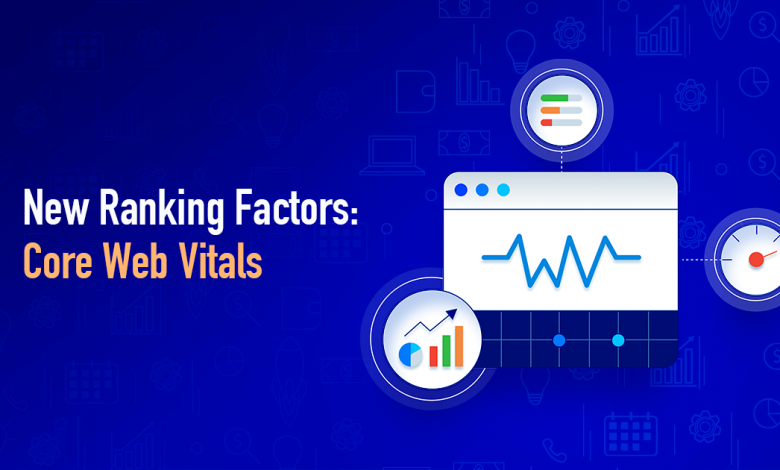
Things you need to know about Google’s core web vitals update
If you are into SEO and overall digital marketing, you’ll know that Google regularly makes changes to its algorithms and other aspects. The primary reason for the company to do this is to better themselves as a search engine. Google’s goal has always been to provide end-users with the most accurate, helpful, and safe information.
One of the most recent revamps that the search engine giant has done is launching core web vitals updates. The company has made significant changes by rolling out several page experience updates that are said to take place in June 2021. If you have missed out on this update, you have come to the right space. Here are 10 important factors to know about the update:
What are core web vitals?
If you aren’t familiar with Google‘s core web vitals, it’s worth gaining basic knowledge about them. One of the simplest explanations of core web vitals is they are a specific set of metrics that are especially focused on the users. It’s through these core web vital metrics that Google is able to gain deep insights on various aspects of real-world user experiences.
Compared to other types of metrics, core web vitals metrics are associated with visual stability, interactivity, and load time of web pages that are all part of the bigger picture of overall use web user experience. Content marketers and marketers, in general, need to optimize web pages and overall website while prioritizing these aspects in order to gain better rankings on Google search pages.
What are the Core web vitals updates?
Google has rolled out three important updates for core web titles, the company calls these three updates three signals. The first one is the LCP (Largest Contentful Paint). This element is all about the loading speed of a particular webpage.
Over the years, Google has heavily emphasized the load speeds of web pages in order to categorize them as quality pages that can possibly improve user experience. The LCP element will help Google broaden its metrics and web page loading speed regardless of the type, size, and geolocation of the web pages.
The next important element of Google’s core web vitals update is CLS (Cumulative Layout Shift). One of the biggest priorities of Google within the web page user experience domain is ensuring that the web pages have stability in content layout. Ensuring this helps Google improve user experience by eliminating factors such as unstable link placing which has the potential to lower the user experience.
FID (First Input Delay) is the third important element aka signal. According to Google, the best but pages that improve user experiences are the ones that have the capabilities to become instantly responsive as soon as they load. Waiting for a particular webpage to fully load in order to become fully interactive can lower the overall user experience which, in turn, brings down the overall seamless web usability priority of Google.
What changes do these updates bring to existing web pages?
Google hasn’t specified whether the core web vitals updates will affect existing web pages. And even if they do, what parameters will be affected and to what extent? Just like the way it has been in the past, the updates may affect and be applicable to newer web pages that do not have a prominent web or domain authority.
Also, it is said that the relevant rankings on Google search will not likely be affected by the updates even if the web pages do not comply with the new metrics. With that being said, it’s definitely worth optimizing your web pages as per the new metrics in order to stay ahead in the competition and improve your website’s organic ranking.
How to adapt to the core web vitals update?
It’s only through playing by Google’s regularly changing rules that marketers are able to gain higher returns with their SEO strategy. As such, it’s important to optimize your web pages as per the newly updated metrics in order to be a part of Google‘s journey to improving the web usability experience for the end-users.
What is interesting to know is that figuring out the areas you need to work on in order to comply with the new metrics is relatively easy. One simple step is to use Google Search Console. In this tool, use the core web vitals tool to view a list of the URLs of your website that have been affected. Apart from viewing the affected URLs, the tool also works great in suggesting elements that you need to work on and improve in order to comply with the new metrics.
Does complying with the new update help in improving rankings?
While Google hasn’t been specific about this, there is a high possibility that complying with the new core web vitals updates will work great in improving rankings. There are several reasons for this.
The first is deployment speed and algorithmic efficiency. Being one of the top technology companies in the world, Google has improved its algorithmic efficiency capabilities to a significant extent over the years with the help of new disruptive technologies such as data science, machine learning, and artificial intelligence. This essentially means that the new updates will take very little time to crawl through the web pages and reshape the overall web usability domain.
Also, by optimizing web pages as per the new updates, marketers can gain a competitive advantage of improving their rankings by being the initial list of web developers to be recognized by the updated algorithmic metrics that are complying with the changes.
Are web pages optimized for mobile web pages too?
Yes. Google prioritizes mobile web pages in the same way as desktop web pages. One simple way to find out if your mobile-optimized webpages are affected by the update is to use the Google Search Console tool. This process is again similar to checking out the URLs of desktop web pages by using the core web vital tool within the Google Search Console tool.




Your blog has helped me become a better version of myself Your words have inspired me to make positive changes in my life
Share with us in the comments your favorite blog posts of all time!
You’ve accomplished a fantastic job, and the material you’ve created is articulate and creative. However, you seem concerned about the prospect of presenting something that is deemed to be questionable. I believe you’ll be able to clean up this mess in a matter of minutes.
Great blog!
Explore our blog at biznjp.com for more tips.
Noodlemagazine This is quite fascinating, You’re a very talented blogger. I’ve subscribed to your feed and can’t wait for more of your magnificent posts. Additionally, I’ve shared your site on my social channels!